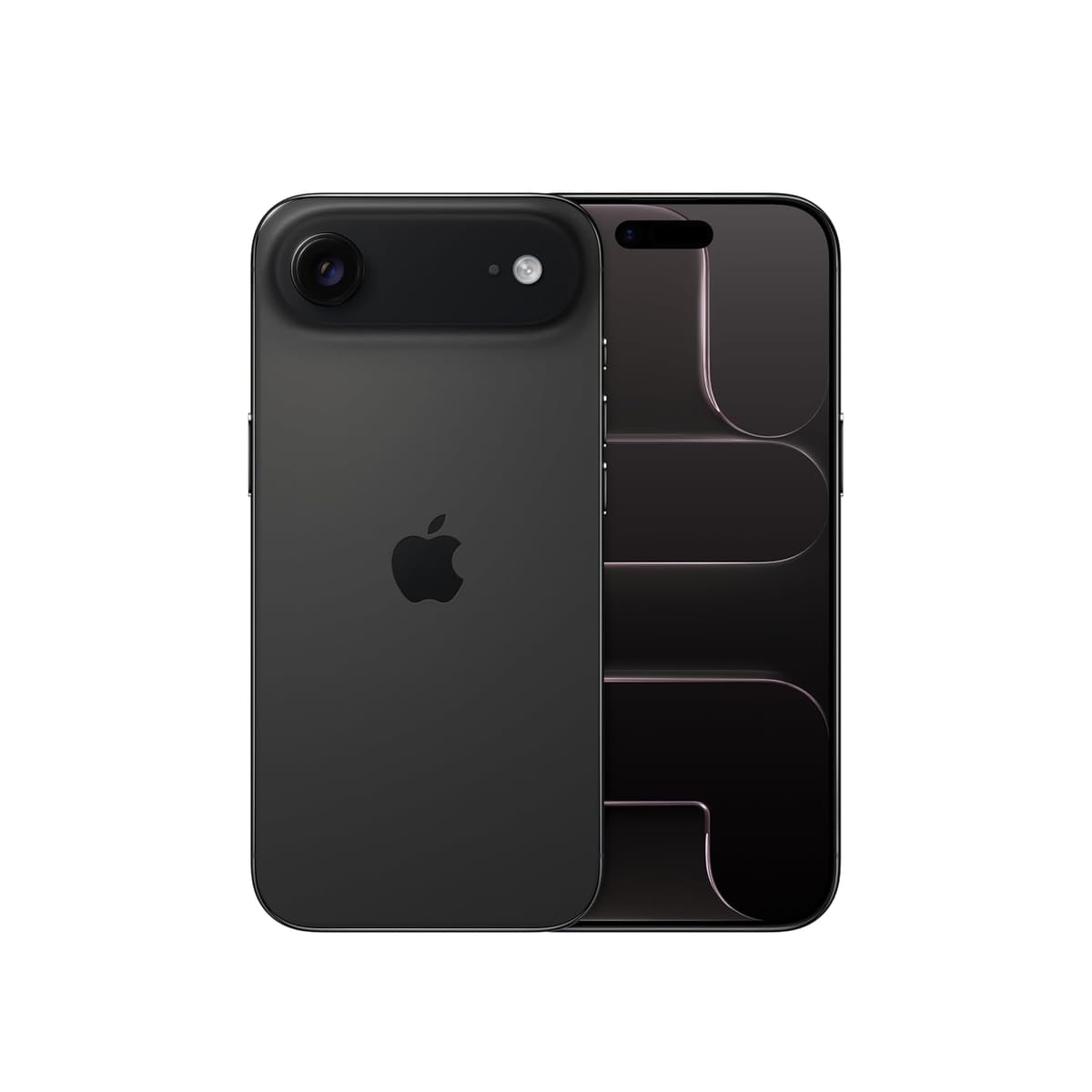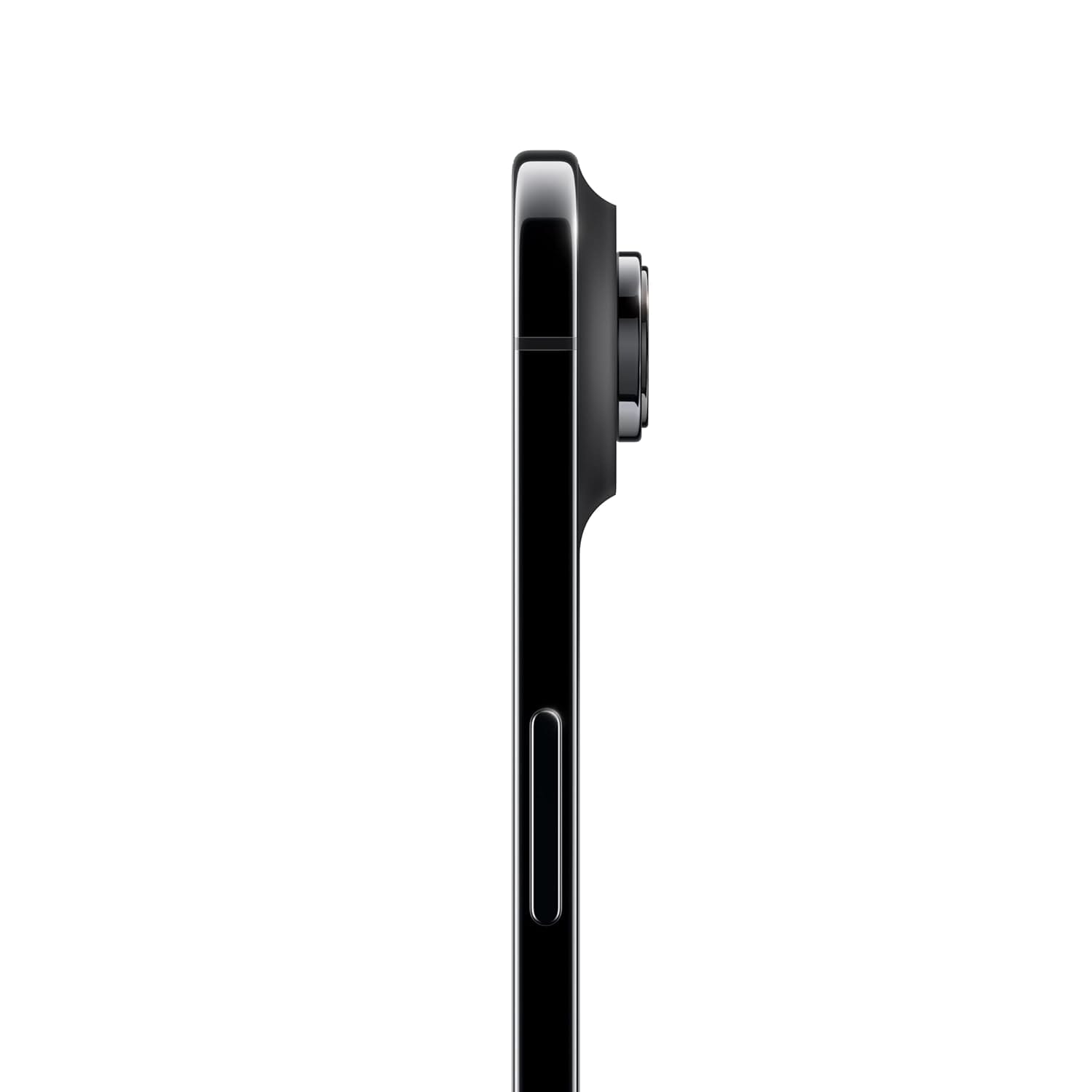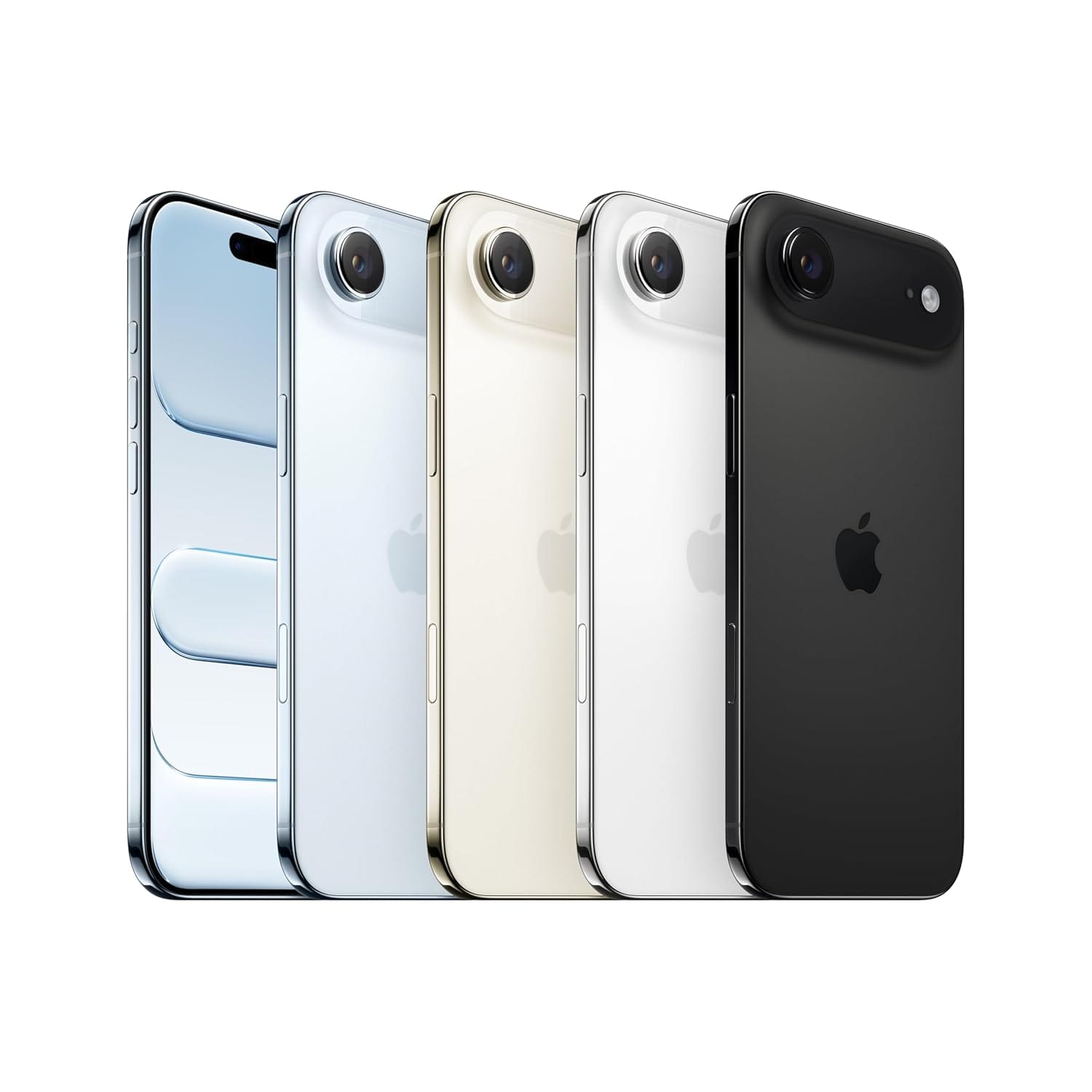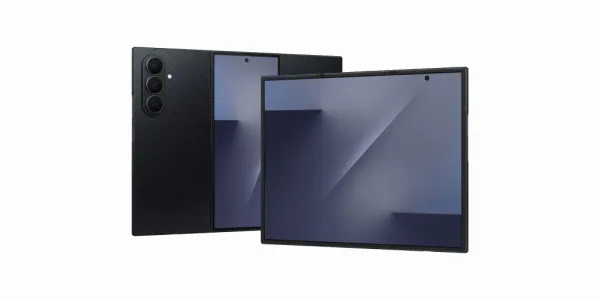iPhone 17 Air: The First Slim Apple Smartphone
The iPhone 17 Air offers a sleek, ultra-thin design and the robust A19 Pro chip, but its smaller battery, mono speaker, and single camera reduce overall capability, making it less practical despite its premium positioning.

Introduction
Apple’s latest creation, the iPhone 17 Air, takes a bold leap in how we think about smartphone design. Imagine holding a device that feels more like a precision card than a bulky mobile. At just around 5.6 mm thick, this is the slimmest iPhone Apple has ever released.
But it is not just about thinness. The design signals a new direction: that form factor and portability can coexist with top tier performance and modern features. In this blog we explore everything about the iPhone 17 Air, its design, display, performance, camera, battery, trade offs, target user, and how it fits in Apple’s broader strategy.
Specification Overview
| Specification | iPhone 17 Air |
|---|---|
| Display | 6.1-inch Super Retina XDR OLED, 120 Hz |
| Processor | A19 Pro Chip (3 nm) |
| Storage Options | 128 GB, 256 GB, 512 GB |
| Camera | 48 MP Wide |
| Front Camera | 12 MP TrueDepth |
| Battery Life | Up to 16 hours video playback |
| Charging | 30 W Fast Charging, MagSafe |
| Audio | Mono Speaker |
| Operating System | iOS 19 |
| Thickness | 5.6 mm |
| Build | Titanium + Ceramic Shield |
| Price in India | Starting at ₹1,19,900 |
The Background Of iPhone 17 Air
What Apple Is Trying to Prove?
Apple’s vision with the iPhone 17 Air is rooted in elegance through minimalism. While most brands are increasing device thickness to house larger batteries, extra lenses, and heavy cooling systems, Apple has turned this trend on its head.
The iPhone 17 Air demonstrates that thinner can still be superior when combined with exceptional engineering. It embodies a philosophy that innovation does not always mean addition; sometimes, it means precision subtraction.
By creating a phone that measures only 5.6 millimetres in thickness, Apple is showcasing how refinement and integration can outperform bulk and complexity. The result is a phone that feels light as air but performs like a heavyweight.
Design and Build Quality
Stepping into the "Slimmest Smartphone" Trend.
The first time you hold the iPhone 17 Air, its extreme lightness is immediately noticeable. Every curve, every edge, feels purposefully crafted. The titanium frame merges seamlessly with the back glass, creating a unified structure that looks and feels exceptional.

Apple has employed a reinforced internal layout that maintains rigidity despite the reduced dimensions. The phone feels durable, solid, and sophisticated, making it one of the most visually striking iPhones ever produced.
A Statement of Intent
Through the iPhone 17 Air, Apple is making a statement about its leadership in industrial design. It proves that design innovation remains a core part of Apple’s identity. By achieving an almost impossibly slim device without sacrificing flagship-level power, Apple reinforces its role as the standard-bearer for smartphone craftsmanship.
Display and Visual Experience
Super Retina XDR OLED Display
The 6.1-inch Super Retina XDR OLED display is a masterpiece in visual engineering. Offering a peak brightness of 2000 nits, it stays clear under harsh sunlight. The 120 Hz ProMotion technology ensures smooth scrolling and responsive animations, while HDR10 support creates rich cinematic visuals for video and streaming content.
Despite its slim profile, the display has lost none of its depth or clarity. Colours are vivid, blacks are perfectly deep, and the adaptive refresh rate delivers a fluid and engaging viewing experience.
Durability and Protection
The display uses Apple’s Ceramic Shield 2, offering improved drop resistance. A new lamination technique reduces internal reflections, producing a deeper, paper-like appearance that enhances both clarity and comfort.
Performance and Hardware
The A19 Pro Chip
At its core, the iPhone 17 Air features the same A19 Pro chip found in the Pro lineup. Built using a cutting-edge 3 nm process, it delivers industry-leading performance and efficiency.
Whether editing 4K videos, running demanding mobile games, or using AI-driven photo tools, the phone feels consistently powerful and smooth. The integration between the A19 Pro, iOS 19, and Apple’s new neural engine allows the iPhone 17 Air to outperform many thicker and heavier competitors.
The Cooling Concern: Lack Of Vapour Chamber
One of the biggest debates surrounding the Air is its lack of a vapour chamber cooling system, a feature that remains exclusive to the Pro lineup. This difference raises a crucial question if both models share the same chip, why choose the Air?
Apple’s answer is clear: performance is not the only measure of excellence. The Air is meant for users who value comfort, weight reduction, and design purity over sustained heavy-load tasks. Its thermal system, though smaller, is highly efficient due to advanced heat diffusion layers and software-driven performance management.
Audio and Speakers
The Single Speaker Argument
Apple’s decision to use a single speaker (no stereo sound) has been one of the most talked-about choices in the iPhone 17 Air. Many expect stereo audio in a premium device, yet Apple has deliberately simplified the design.
So why should people still consider it? The tuning is where Apple’s expertise shines. The sound remains rich, clear, and distortion-free even at high volume. While stereo output would add more dimension, the mono configuration complements the Air’s goal of simplicity and balance.
Apple is clearly testing whether premium quality must always rely on quantity. For most users who consume media through AirPods or other wireless devices, this design decision feels practical rather than limiting.
Battery and Charging
Smaller Battery, Greater Efficiency
The iPhone 17 Air uses a smaller battery compared to its Pro siblings, yet battery endurance remains commendable. Apple claims up to 16 hours of video playback, thanks to the A19 Pro chip’s superior energy management and the efficiency of iOS 19.
Fast charging and MagSafe wireless charging are retained, making daily use simple and reliable. It is a clear demonstration that battery life is not purely determined by size, but by the intelligence of the hardware-software partnership.
Camera System
A Single Lens That Delivers
The iPhone 17 Air features a single 48 MP wide-angle sensor rather than multiple lenses. On paper, this seems like a step down, but Apple’s computational photography changes that perception.
Using the Photonic Engine and Deep Fusion, images maintain stunning sharpness and natural colour tones. Low-light photography has improved considerably, and the new Smart HDR ensures accurate dynamic range.
This proves that one exceptional sensor, powered by the A19 Pro’s image signal processor, can outperform several average ones.
Software and User Experience
iOS 19 and Apple Intelligence
The iPhone 17 Air ships with iOS 19, a version focused on intelligence and adaptability. New AI-based tools such as Smart Context Search, Live Voice Filters, and Dynamic Focus photography make the phone smarter and more responsive than ever.
The operating system feels light, clean, and fluid. Animations are natural, and app switching happens instantly. This deep integration between hardware and software is what defines Apple’s premium ecosystem. The iPhone 17 Air features Apple Intelligence, an advanced AI system that adapts to your needs in real time. It enhances Siri, writing, and photography while keeping all your data private and secure through powerful on-device processing and intelligent efficiency.
Why People Should Still Consider the iPhone 17 Air?
Can the compromises be ignored?
At first glance, some may question why anyone should buy a phone with a mono speaker, a smaller battery, and a single camera, especially when the iPhone 17 Pro exists nearby in price. The answer lies in what the Air stands for.

It is designed for users who value sophistication, comfort, and minimalism over maximal features. It provides all the raw power of the A19 Pro, wrapped in the most elegant form factor Apple has ever built. It is for those who want flagship performance without the bulk or visual complexity of the Pro lineup.
The iPhone 17 Air appeals to people who prioritise experience over specification lists. It reintroduces the feeling of simplicity and refinement that defined Apple’s earlier designs.
Why Choose Air Over Pro
Design Philosophy Versus Performance Engineering
The iPhone 17 Pro may have better cooling and additional cameras, but it also carries extra weight and thickness. The Air, on the other hand, offers a feeling of comfort and portability that the Pro simply cannot match.
Even though both share the A19 Pro chip, Apple’s goal with the Air is not to compete on power but to represent purity. It is a statement for those who appreciate subtle engineering and design that feels invisible in the hand.
The price difference between the two is narrow, yet what you are paying for with the Air is the art of restraint the mastery of achieving more with less.
A Redefinition of Premium
The iPhone 17 Air challenges the definition of premium. It is not defined by excess or feature count but by design precision, efficiency, and user comfort.
By intentionally making a slim device with certain limitations, Apple is proving that true innovation does not always follow the market trend. The iPhone 17 Air is about the future one where refinement takes precedence over redundancy.
Final Thoughts
The iPhone 17 Air is a bold, thoughtful, and perhaps divisive product. It is not built for everyone, and that is precisely its strength. For those who value design purity, lightness, and the quiet power of Apple’s engineering, it is a remarkable piece of technology.
Apple is not merely selling a slim iPhone. It is showcasing its mastery of materials, thermal dynamics, and software optimisation. It is asking users to rethink what makes a smartphone premium.
Despite its smaller battery, mono speaker, and single camera, the iPhone 17 Air delivers an experience that is fluid, refined, and deeply personal. It captures Apple’s enduring philosophy: perfection is not about adding more, but about removing what is unnecessary.



